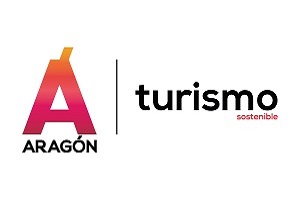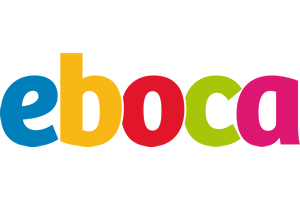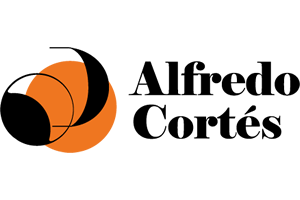Cynthia Gálvez, from Zaragoza, Spain, is a computer engineer and graphic designer, specialized in the extended reality environment. This is a universe that encompasses augmented, virtual and mixed realities, in which she works as creative technology manager for a large multinational.
She has also been one of the organizers of the Descubre XR meeting, an event that took place on November 18 and turned the Aragonese capital for a day in the Spanish nerve center of technologies related to extended reality.
In an interview with Go Aragón, Gálvez reviews a trajectory that has led him to develop projects in the educational and health fields and to win awards such as the Women Techmakers in the 5G Challenge 2021 or the best Spanish extended reality app in 2017.
Descubre XR has just been held this weekend in Zaragoza. What is your assessment of the event?
The truth is that after the Descubre XR we have finished the whole team with a very positive balance. We have had a day in which we have felt very comfortable with the community, with all the people who have come. And it has been positive because there were many people we knew, but others we didn’t, so we know that it has reached an audience that is not so local, but much more national. We have been left with a good taste in our mouths, with an emotional hangover. There are points of improvement, also of discovery, of ‘feedback’ and ‘insight’ that we have seen and we are ready for a new edition in 2024.
How many visitors did you attract?
We had a capacity of more than 200 people, between organization, speakers, different guests and people who wanted to come. We brought together twenty speakers, about a dozen sponsors and collaborators. In the end, it was quite a full day.
Which were the presentations and workshops that aroused the most interest?
The truth is that we have made an event in which there was room for everyone, very diverse, since there were from large consulting firms to other much more independent projects, startups, content creators… I would say that all of them have aroused great interest because we had two parallel tracks. We did expect one of the two tracks to be more technical and less attended, but the surprise was that we had a very positive balance, 50/50. I have received very positive comments from all of them.
Although the event was focused on extended reality and was attended by several specialists, Descubre XR was also open to the general public, what was the response from this less specialized visitor?
After creating Descubre XR and seeing that they follow us from different profiles, we have seen that the more professional public has done a lot of networking, but the general public has discovered that Zaragoza has a very large XR community that they did not expect. I really like diversity and you saw, for example, vocational training and university students. And you saw that they were left with professional expectations about how far they could go or in which companies they could work. For this general input, it has been a turning point to see that Zaragoza is on the map of XR communities and that there is a lot of future employment.
The demonstrations of products such as Meta glasses were one of the attractions for the public less familiar with extended reality, have they surprised the curious?
In addition to the talks, we had a series of stands with different companies promoting and publicizing their products. One of them was that of our colleagues from Deusens and Infinitum Fest. There were glasses tests; they are ‘demo stands’ that attract a lot of attention because everyone can try a technology that often is not accessible to them. There were a lot of people gathered around these tables, because, in addition, what they proposed was very playful, very gamified, very fun. It was the relaxed point to have these ‘stands’ and there were many people amazed with what can be achieved today with this type of glasses.
How do you imagine that these technologies will be present in everyday life in a decade?
The truth is that predicting the future, especially in technology, is difficult. Even big companies fail with their products. We are on the way to developing immersive technologies because it is a challenge; it is a challenge in content creation, hardware development, use cases… within 10 years they will be much more present than now and I am convinced that it will be a transparent technology, we will use it in our daily lives without realizing it. Will we get to have glasses, Vision Pro or Quest, in our homes or use them on the street? I think it’s a product that still has to evolve, but it will certainly be present in everyday life along with artificial intelligence and a lot of technologies without us realizing that it’s there, because it’s already happening, especially thanks to the use of smartphones. So yes, within 10 years we will all be with this technology in our pockets without realizing it.
In what areas does it have the greatest capacity for growth?
These technologies can be used in a lot of areas. The ones that are moving the most right now are education, medicine, industry and marketing. Undoubtedly, they have a great future in these areas, each with its own use cases, benefits, advantages… they will have a great future in all of them. For me, and sweeping a little for what I like, I believe that technologies have to have a good purpose beyond entertainment. We are seeing spectacular cases in medicine; within the Discover XR, one of the companies, Singular, showed how they are using immersive technologies in operations on real patients. Also, in the Altavoz, we saw a case that used virtual reality for children with long hospital stays. For me, one of the most beautiful cases, where technology makes the most sense, is in healthcare. So I hope in the future it will be very focused on medicine.
Is the average citizen really aware of the potential of extended reality?
As we see, extended reality is still a challenge. The average person, when they read news about topics like the metaverse, which became a bit trendy a few years ago, still sees it as far away. If we focus on such large devices, it is more difficult to see it, but for example, generation Z uses social networks, such as Tik Tok, SnapChat or Instagram, and they have an augmented reality tool, they are using it daily; even to make product sales. We are using it, but we are not yet aware of how it works.
And that we are using them without realizing it is a very positive thing, because we are seeing that the technology is transparent. We are not yet aware of its potential, change is often scary, but we are working on it. We organize conferences such as Descubre XR so that all this content reaches the ordinary user, so that they can get to know it and see that there is no need to be so scared, that there are very positive aims and technology is going for it.

Why did projects like Google Glass fall on deaf ears, or it seems that others, like Facebook’s metaverse, have yet to get off the ground?
Technologies are a multifaceted challenge. On the one hand, there is the hardware, which is still very expensive and must be comfortable to use. We are also facing the challenges of content and software creation. And we see that projects of large companies have failed. Sometimes it is good to see that the big ones also fail. For example, Google Glasses was a very disruptive project, but we were at a time when the average person was a bit curious about someone wearing glasses with a camera because of privacy issues. They felt invaded. For me, they are projects that didn’t work because they came too early, they came to a society that wasn’t ready. With Google Glasses they relaunched the project years later, but more focused on medical issues. These are two points: we are facing a difficult challenge and people find it difficult to change.
You have developed as a computer engineer and as a graphic designer to specialize in augmented reality, why did you choose this field?
I have been involved in extended reality and augmented reality for more than 10 years. I started when I was very young, when I was in college. When I finished, I had to do a final project and I decided to join both careers and create a single project that was a little more complete. At that time I was really into augmented reality; it wasn’t known at all because I’m talking about 2012. But there were some examples that were being published by big companies and I thought: ‘this is very cool and we have to do some research on it’. When I saw what I could do, I found some university papers where they used augmented reality for the symbolic play of children with autism and I thought it would be great to be able to create technology to help people. And so I did, I started with a project in which I made an augmented reality application for children with functional diversity, with special educational needs. At that time the University of Zaragoza launched its first Spinup program to support entrepreneurship of research groups and students, I signed up, I was chosen and there began my path of entrepreneurship. I started with these technologies and ten years later I am still with them.
You are referring to the JUGLAR project, what did it consist of?
It was a project in which we used augmented reality on a tablet to promote different fields of early attention in children with functional diversity, such as the development of memory, attention, perception… we took the traditional exercises that are done at school or in therapy to immersive technologies. The child did not interact with the tablet, but had a series of cards with which he interacted and challenges were posed. What we achieved in real therapy is that children who did not want to do therapy, with this type of application they did it all without complaining, they were entertained and motivated.
This project was not only for children, but it was also tested with adults with functional diversity and the results were also very positive. As they played a collaborative game, they helped each other, applauded when they achieved their goals and, most importantly, they felt special when using it because for them it was like magic; that is, there are certain groups that do not use cell phones or have computers and being able to do this type of more technological exercises with them was exciting. As a professional, when you see that, it fills you with pride and a very positive feeling to know that you can help.
Another of your projects, Holosurg, won the 2017 award for the best Spanish extended reality app. Beyond that recognition, are you satisfied with its results?
It was another project that marked a turning point in my professional career. It is a project that I carried out while I was in an Aragonese startup, being responsible for R&D. It was a mixed reality experience, like Hololens, in the field of health, for the removal of a malignant tumor from an oncology patient. It was applied in the Gregorio Marañón hospital in 2017 as a first approximation, nothing similar had been done in Spain, of how to bring this type of device to a surgical setting. The result was super positive; we were going to get to know the environment, to talk to the surgeons to see how we could help them with their needs. On the day of the surgery, where the system was being used, I was with the patient and the whole medical team. Seeing your technology being used to help people is exciting. We won awards, but, in the end, the awards are not the important thing, it is the outcome of the project and its continuities. For me, it is one of the best professional moments of my life.

You also won the Women Techmakers award in Orange’s 5G Challenge 2021, is the technological field egalitarian or do some things still need to change?
In this technology sector we are beginning to overcome the barriers that exist in terms of diversity, especially gender. When I started studying, there were very few girls and what we are seeing over the years is that these ratios are getting even worse. When you get to the professional field, you find work teams that are wonderful, but there are also other aspects that are less positive and we have to work to make women in technology more visible. I realized, when I was starting a business, all the difficulties that women had and that gave me the strength and energy to get involved in the issue of diversity in this field. I am woman techmaker ambassador and co-founder of the association Muyeres Tech, in which we are dedicated to give visibility to women in technology, also in Aragon. We have to be there, to show ourselves, so that our peers can see that we also have strength, good ideas and we can develop projects and products.
What advice would you give to a girl with technological concerns?
The advice I would give to all those young girls who like technology, but do not yet see themselves reflected in it, is to follow their passion. If they like something, it has to be there. They will find barriers, they will find moments when they feel they are not good for it. But it’s normal to feel that way, we often call it the impostor syndrome. And you have to be there, because there are days that are bad, others that are good and it is important, to feel confident, to surround yourself with people who are like you. For example, mentors who accompany you. And networks, communities; there are a lot of initiatives for girls in technology. What that does is that you can see yourself reflected and that you are one more. Don’t put up barriers; you will find many of them along the way. There are initiatives like Technovation Girls Aragón, ‘hackathons’ for girls in which they have a mentor who accompanies them… the family environment is also very important, telling your parents to take you to that robotics workshop, which is not only for children.
Lorena González and Vicky Vasán, from Inmersiva XR, told Go Aragón a few days ago that Spain has good talent in the field of extended reality, what measures would be necessary so that this potential could be fully developed?
In the Spanish XR sector, when you are inside, you realize that there is a lot of talent. We are a very powerful community, the truth is that the projects that exist at the national level are surprising, but it is true that we need a little more help. On the one hand, financially, to allow small companies or startups to create more long-term projects with larger teams; also, teams that are better paid. We are in a difficult environment because we need many different technical profiles. These are not projects that can be carried out by one or two people, but you have to nurture them with a big team. A little more support to the industry would be ideal; also, support from the companies, which trust in this type of projects, because it seems that until they succeed abroad, in Spain it is difficult for us to adopt them.
And how are we doing in Aragon? Do we have much to say in these technologies?
We always talk at a national level, but in Aragon we have a lot of talent. There are a lot of companies that have been pioneers in the XR field for many years. Deusens has been one that has supported us at all times and has many awards and projects in different fields. But we also have other audiovisual industries, which may not be so well known in Aragon, but they are known worldwide. We have to bet on Aragonese companies. In Descubre XR several of them have won awards.















